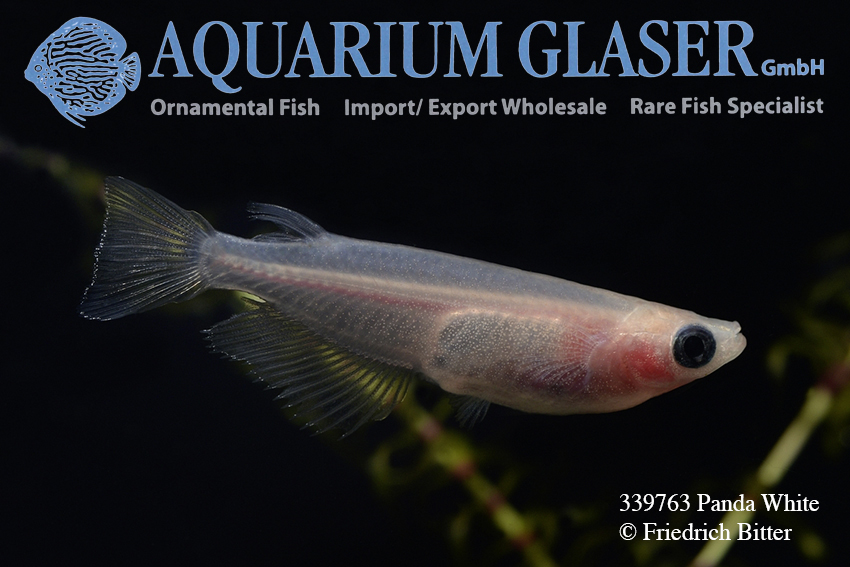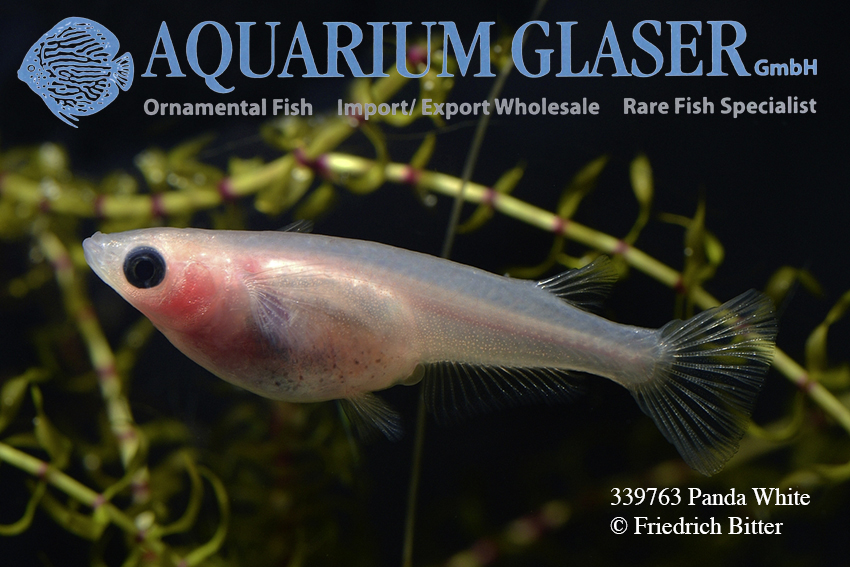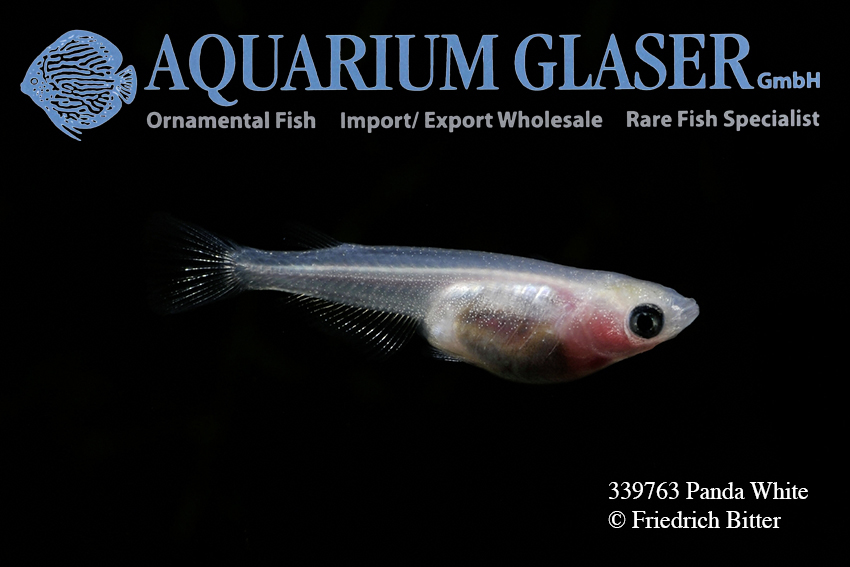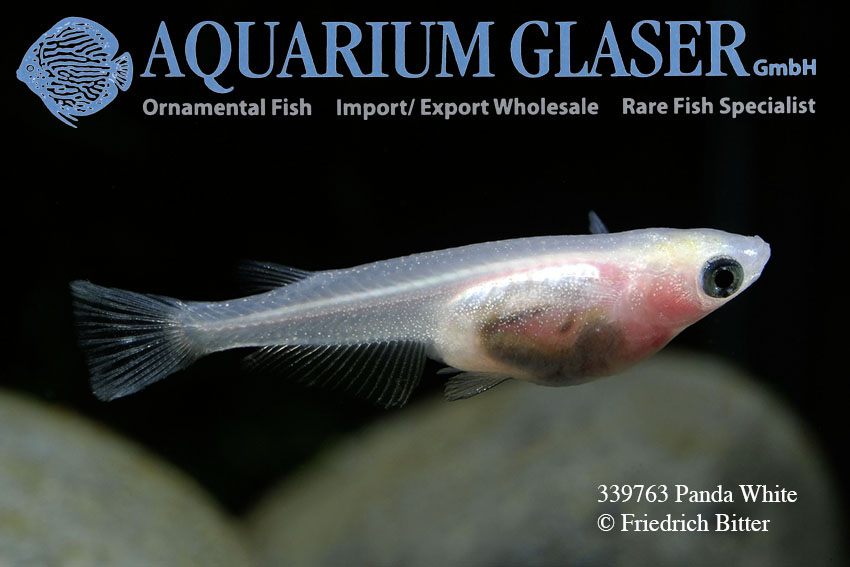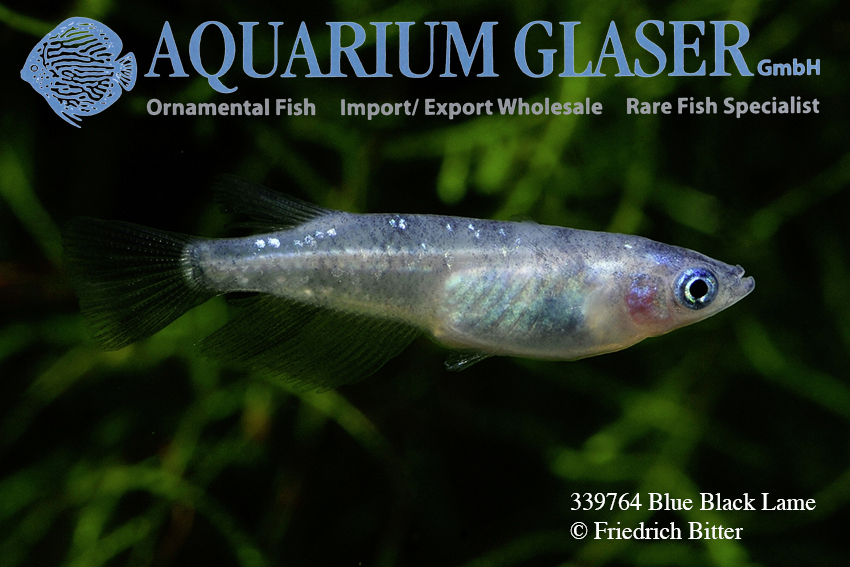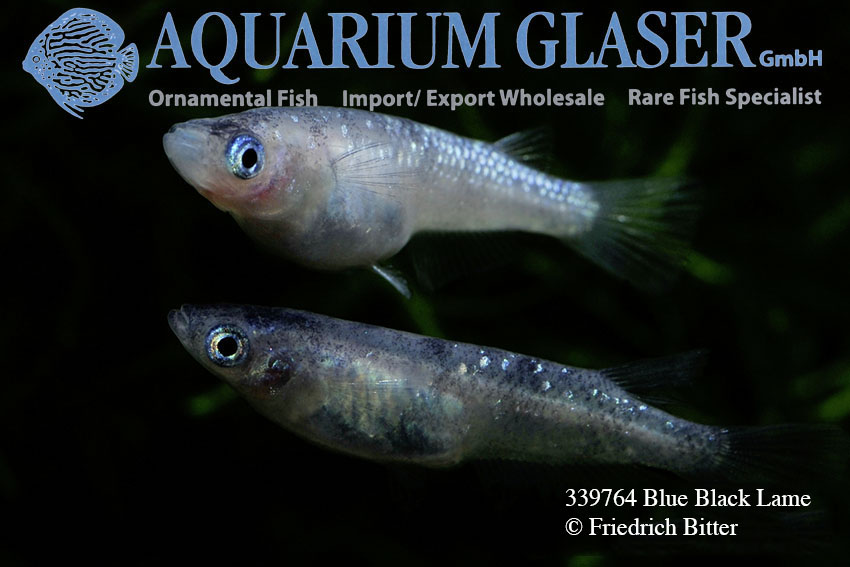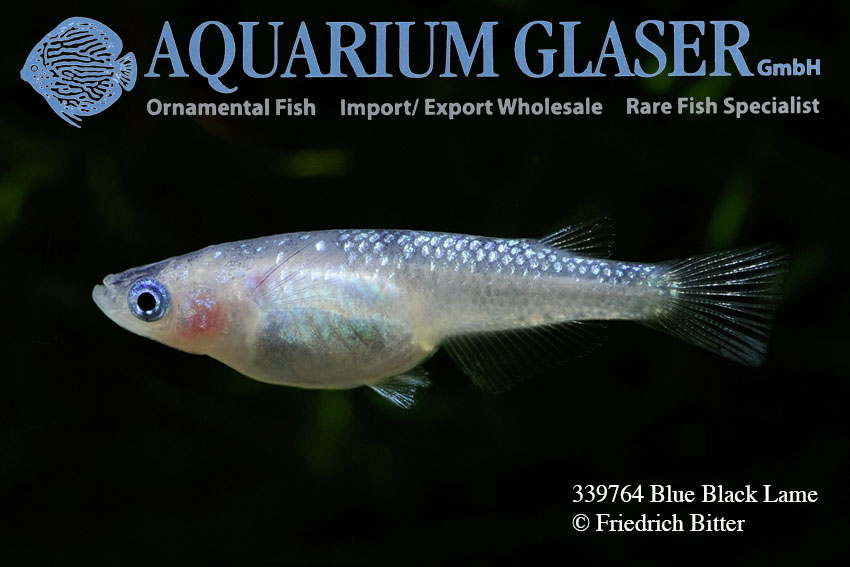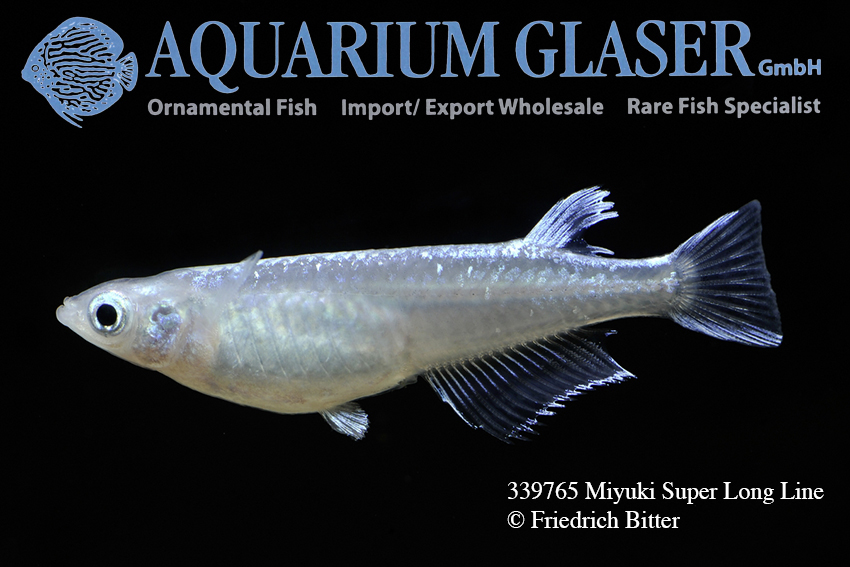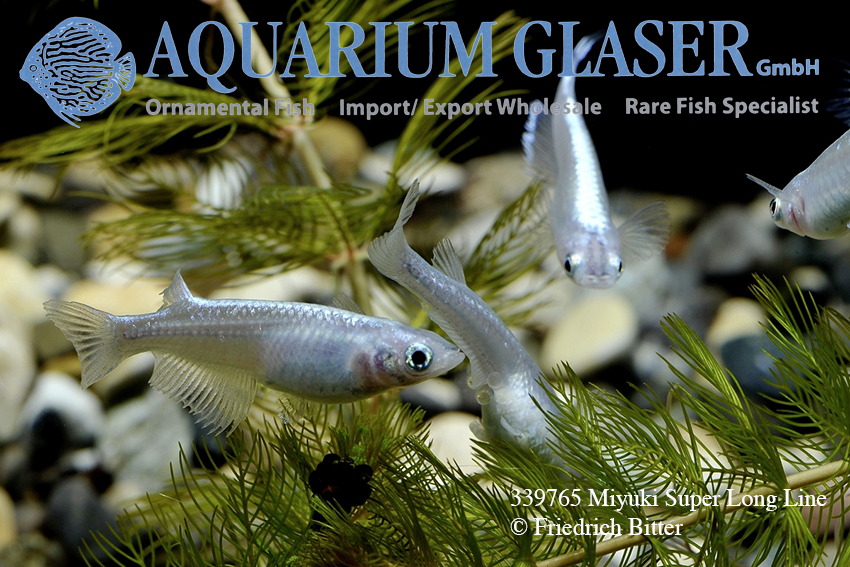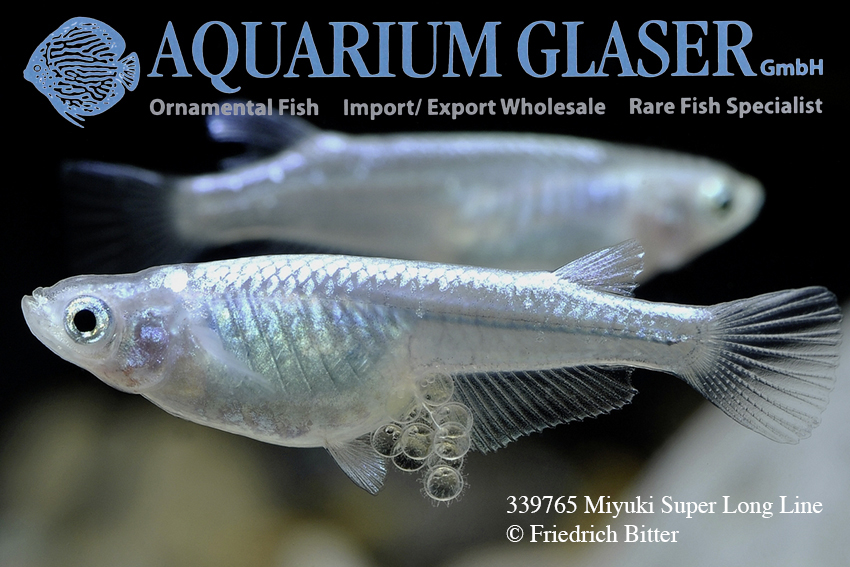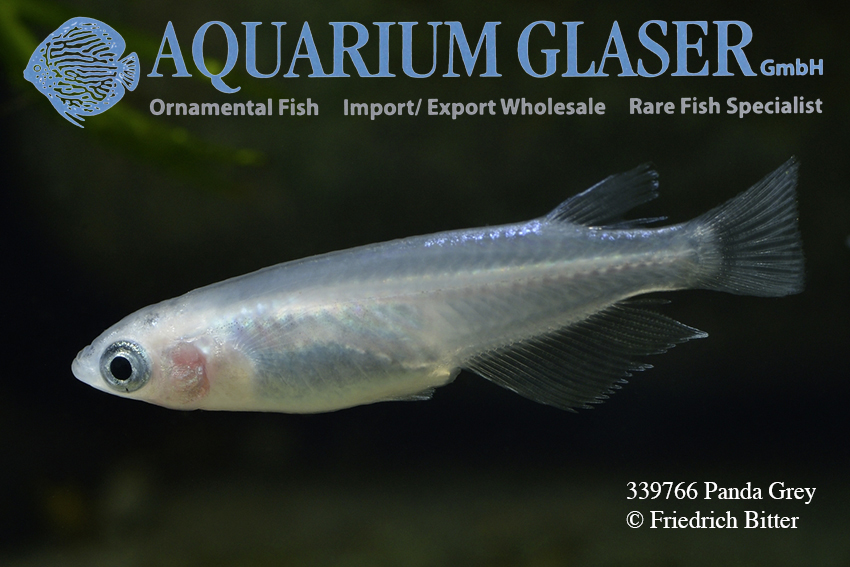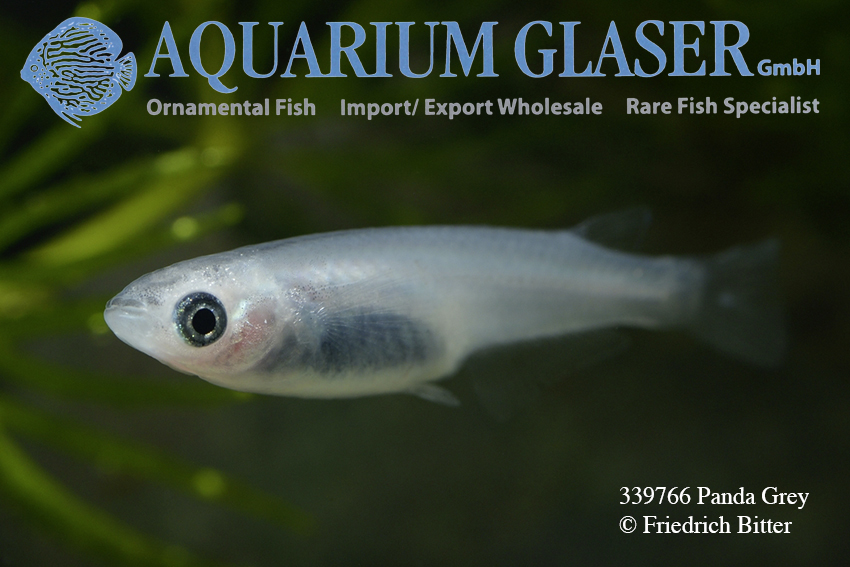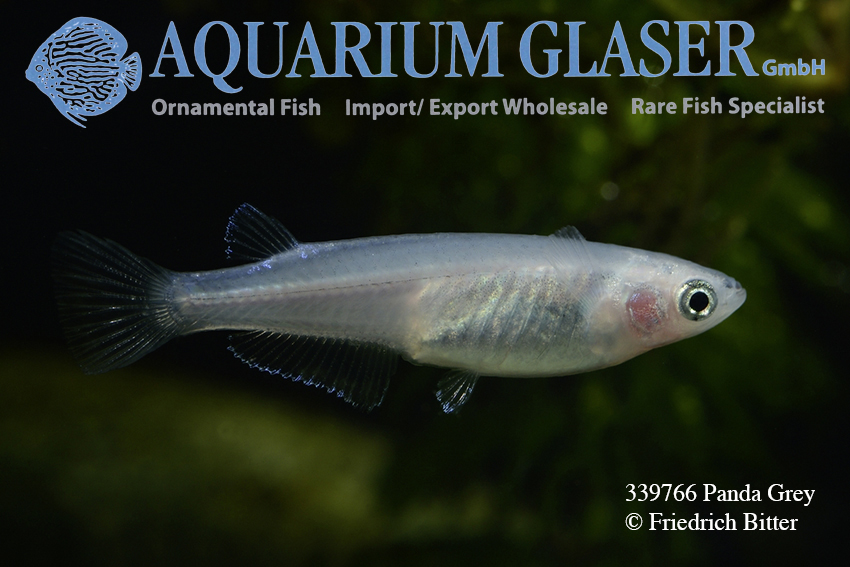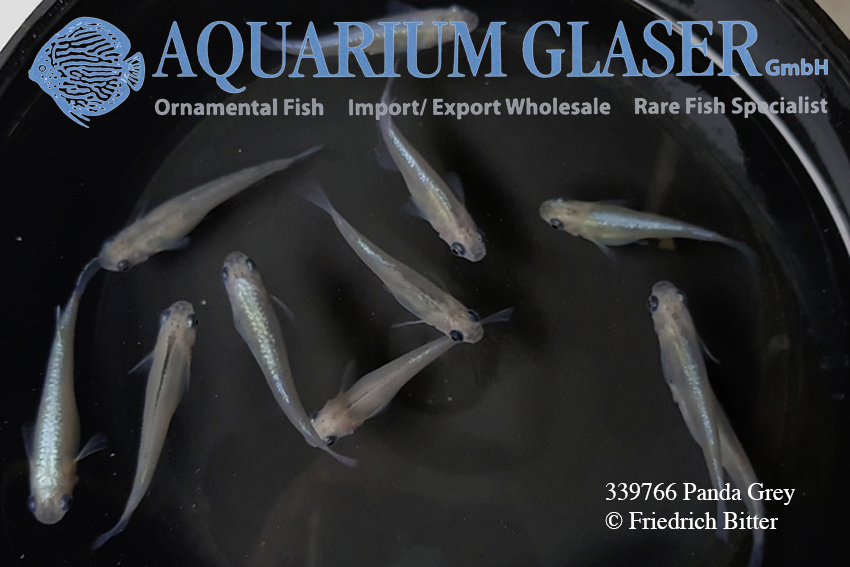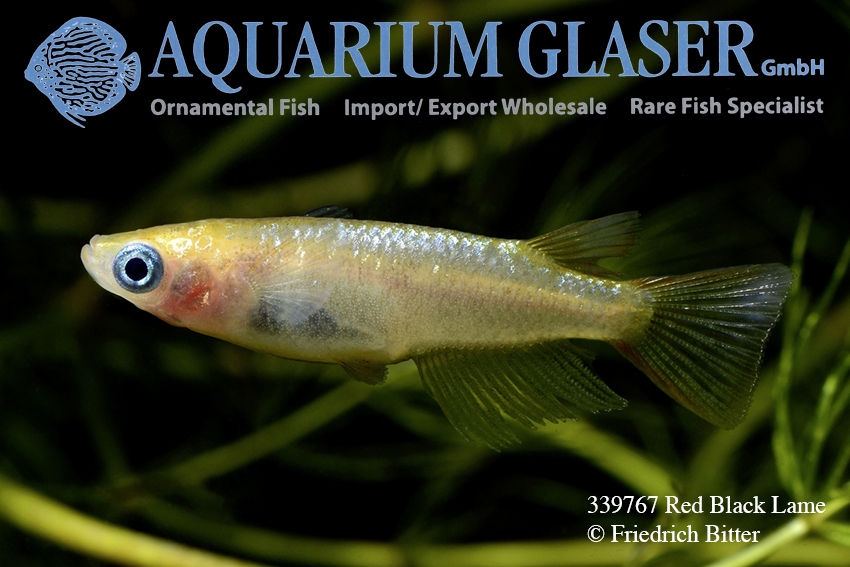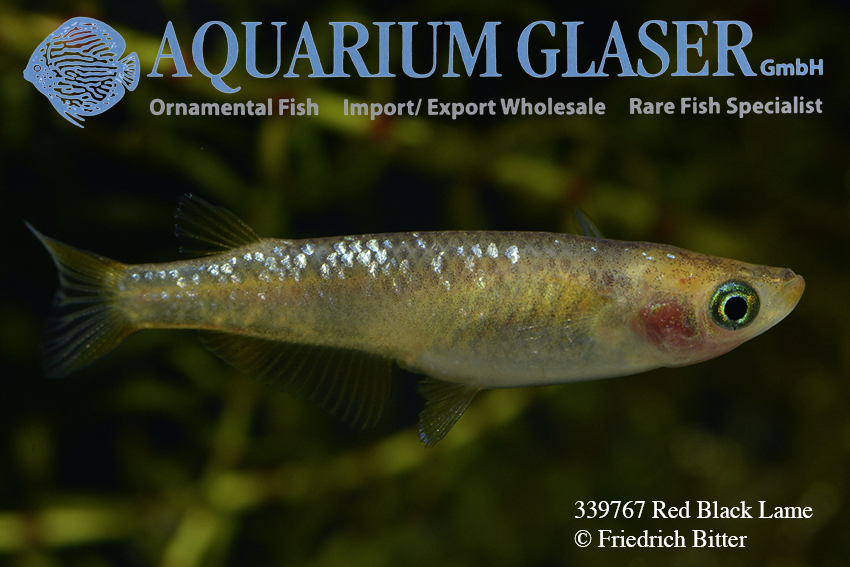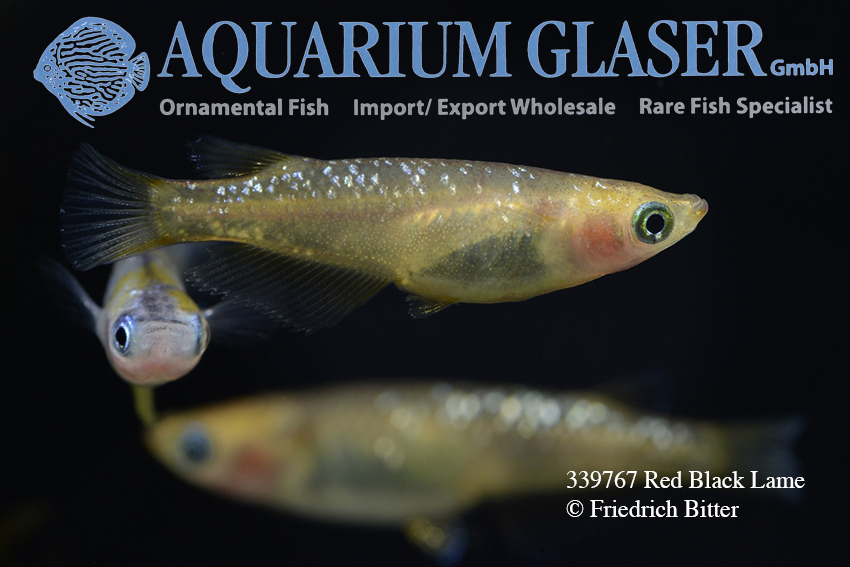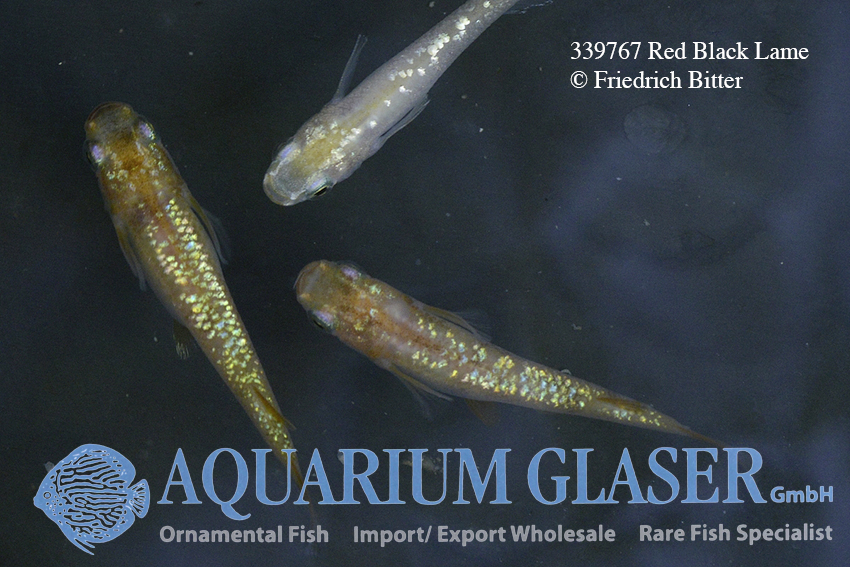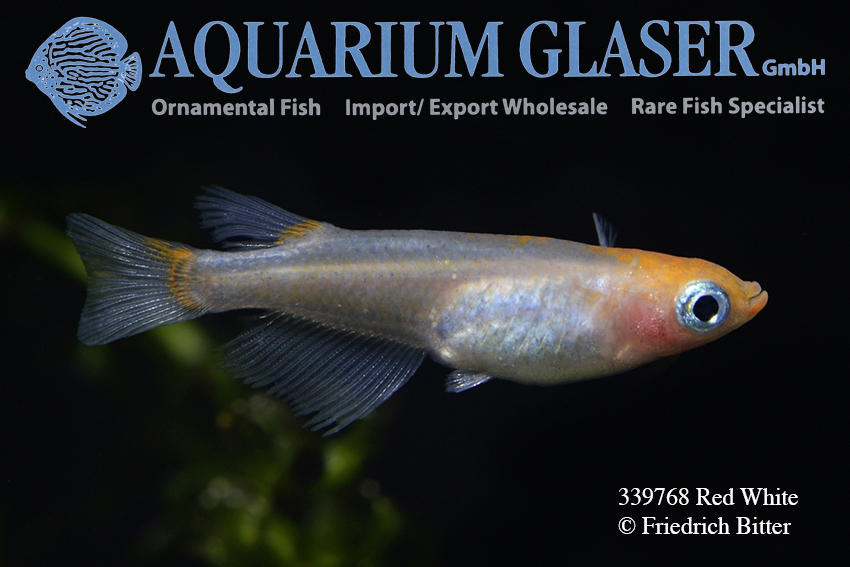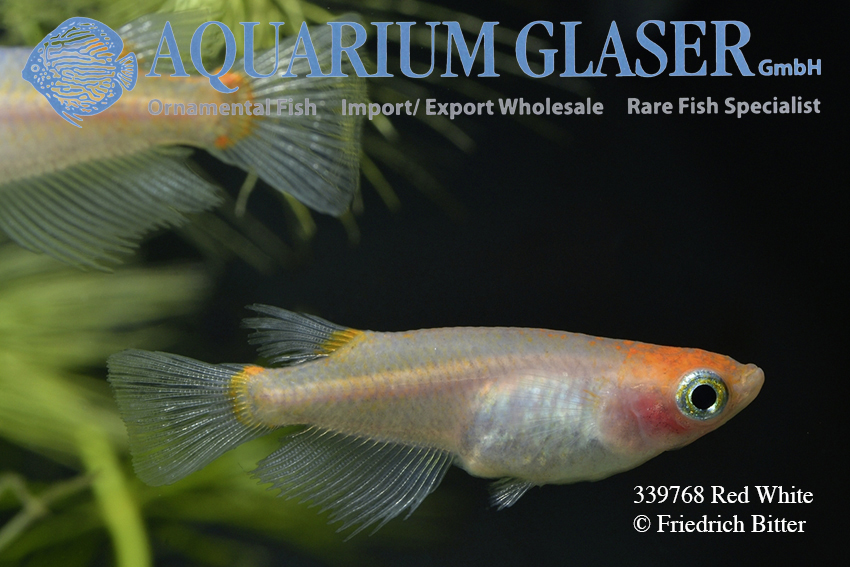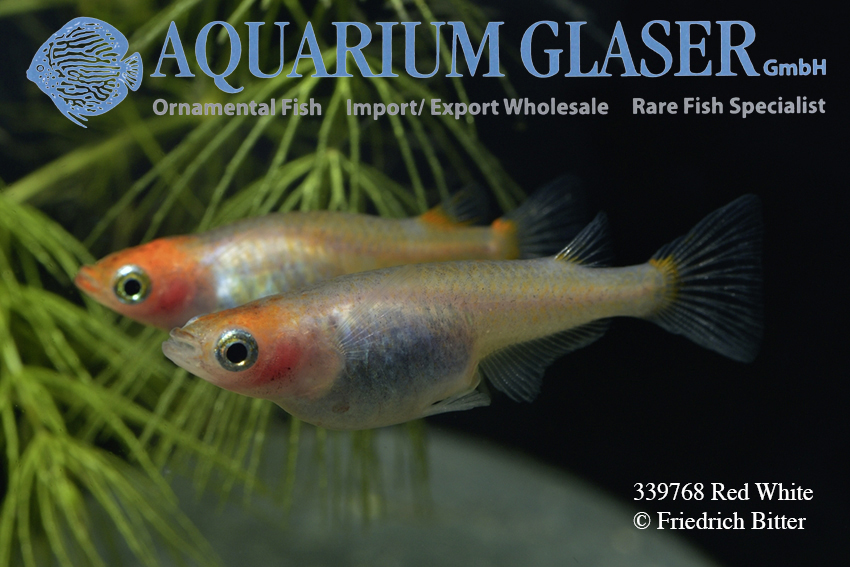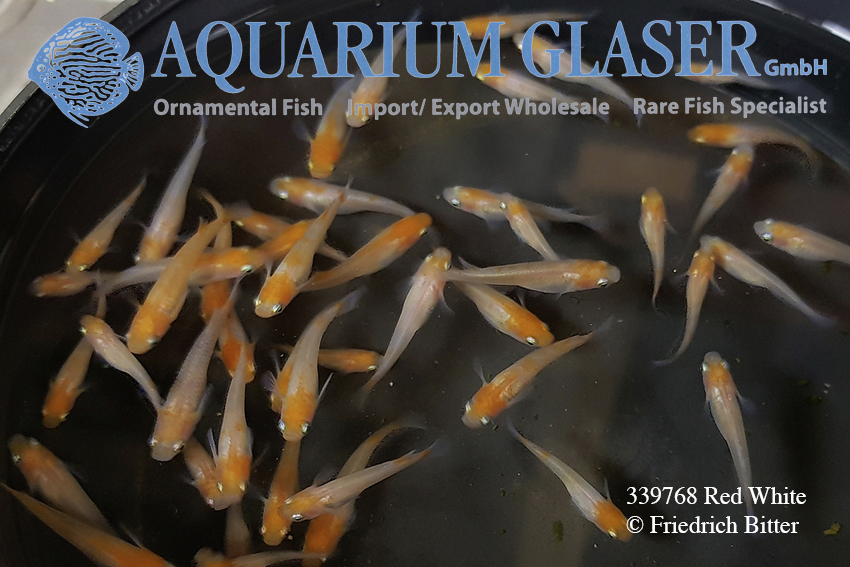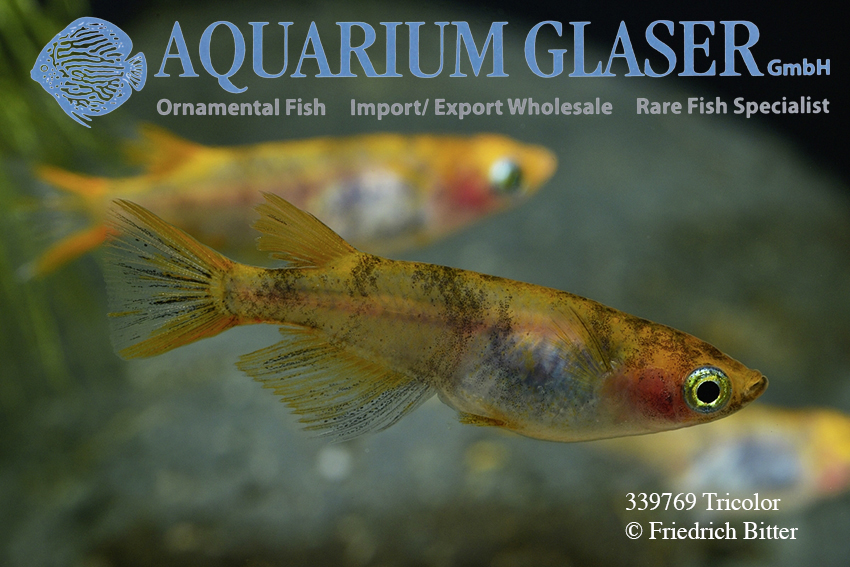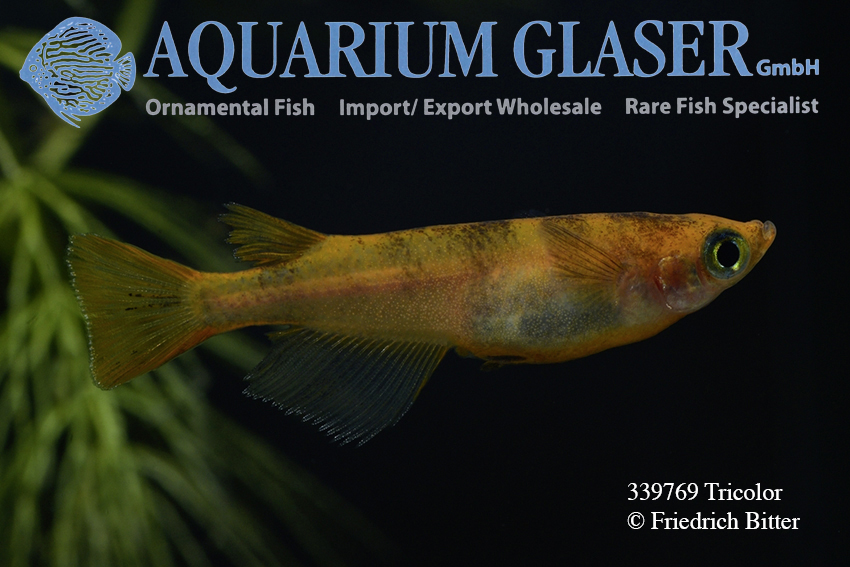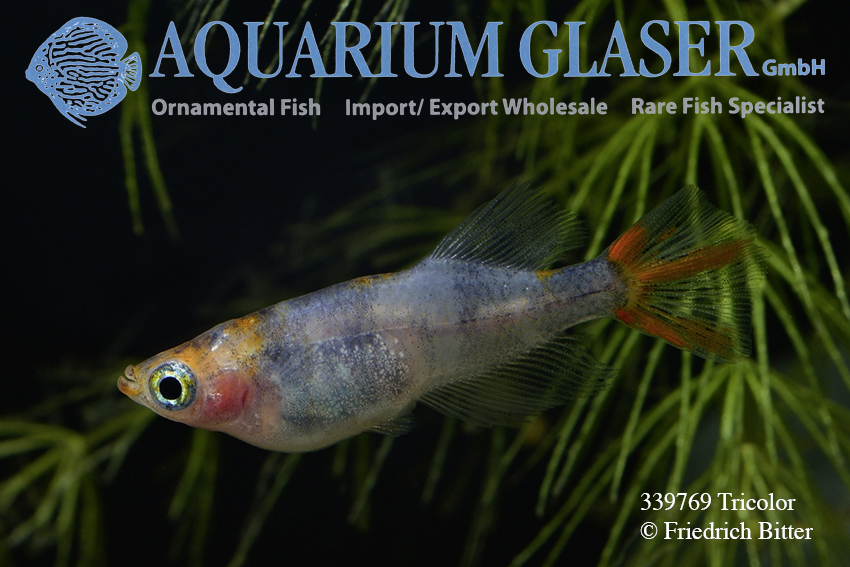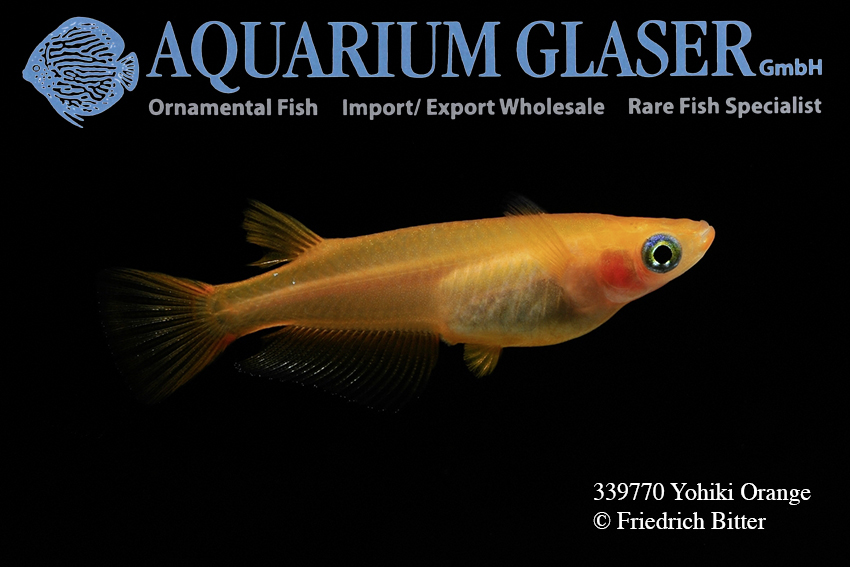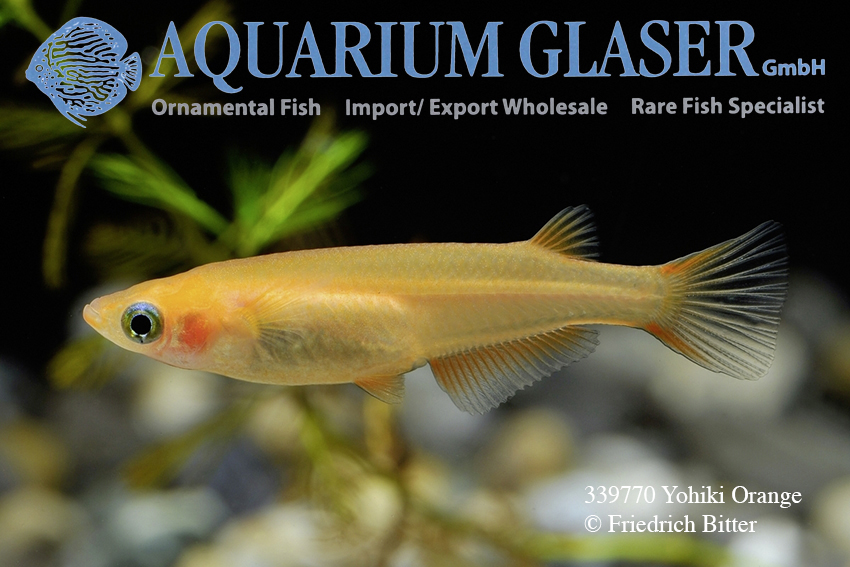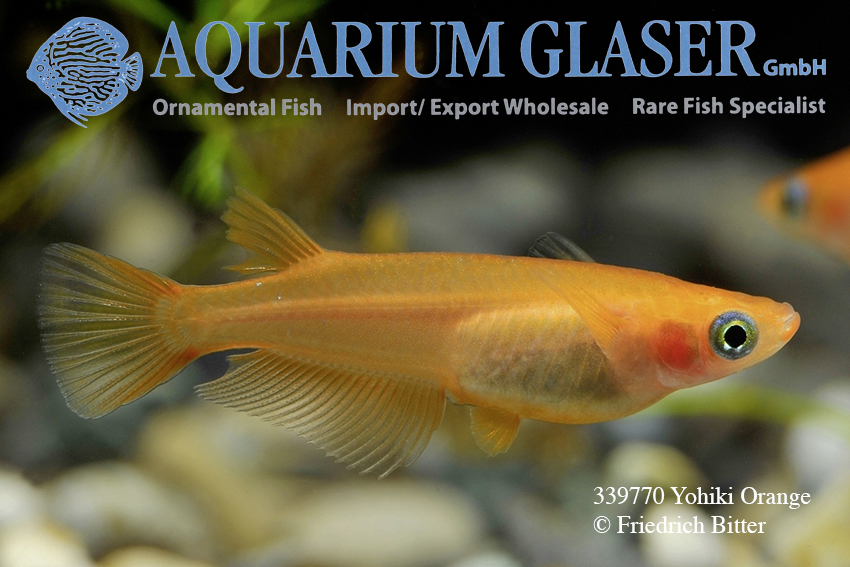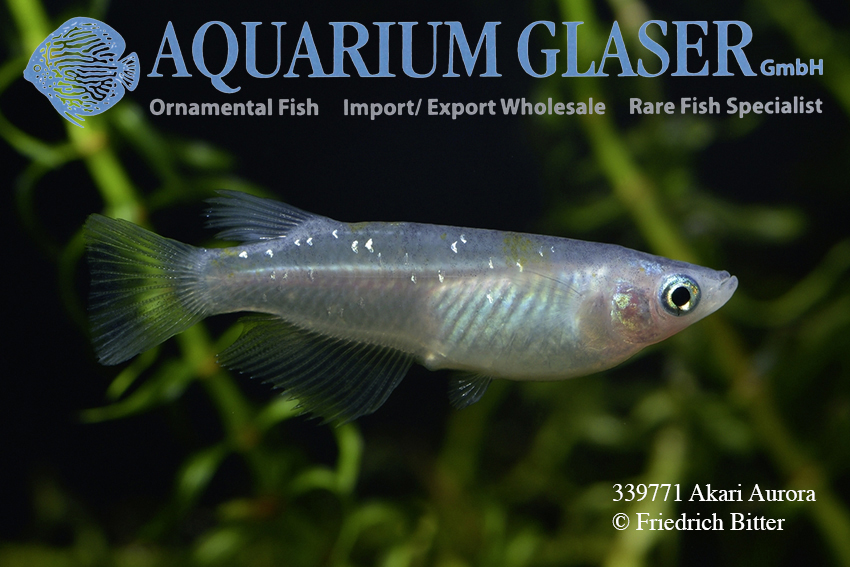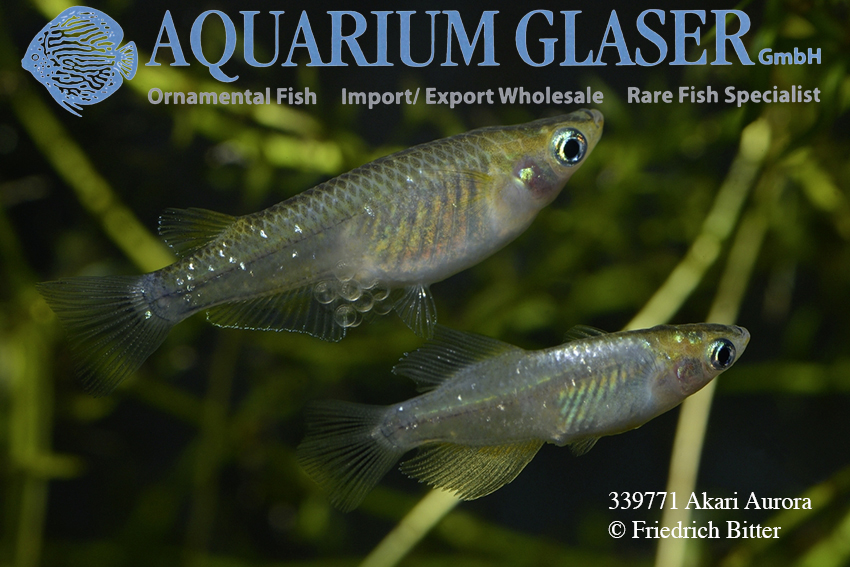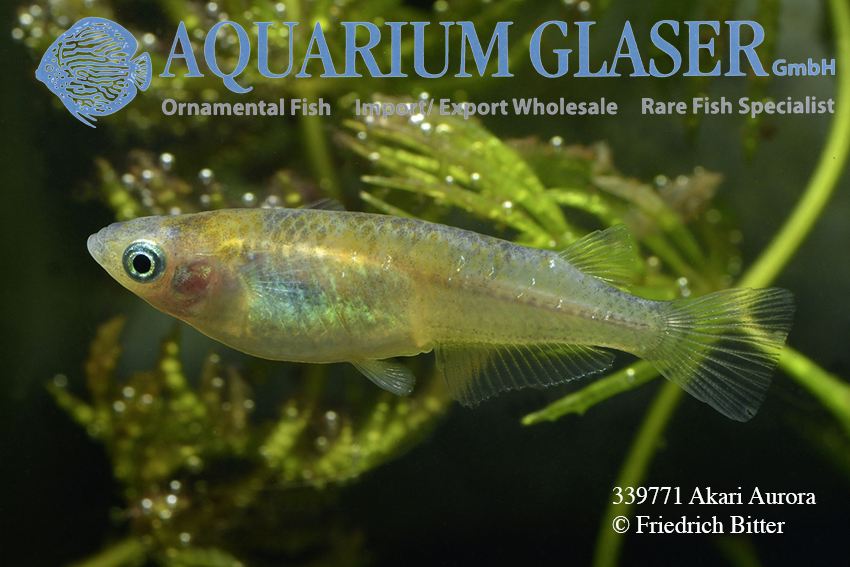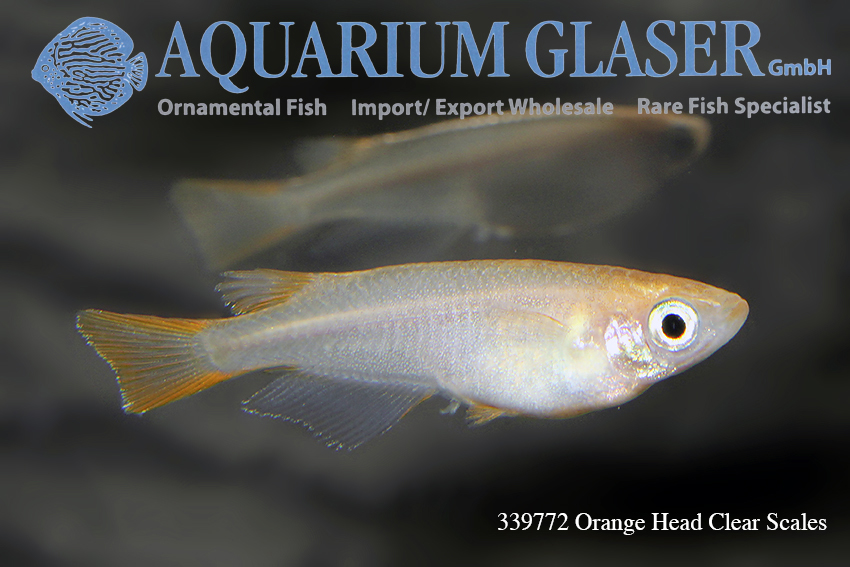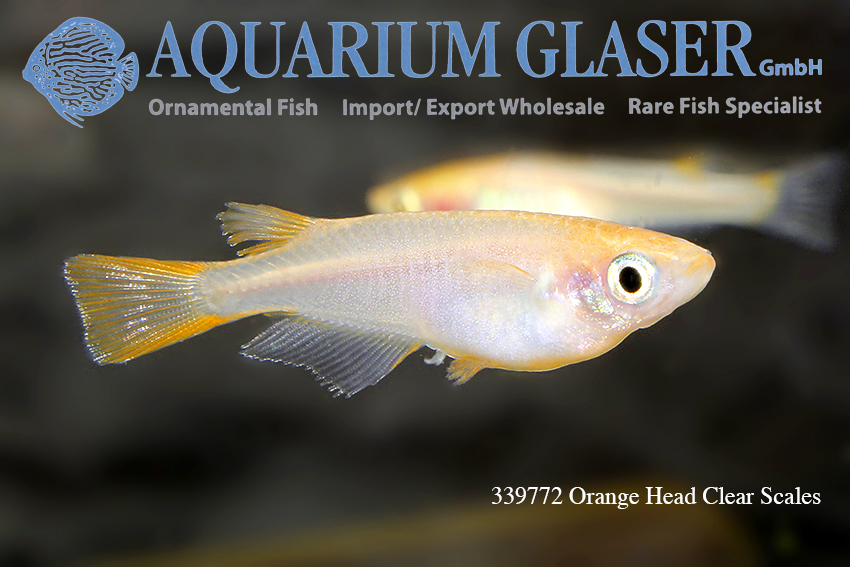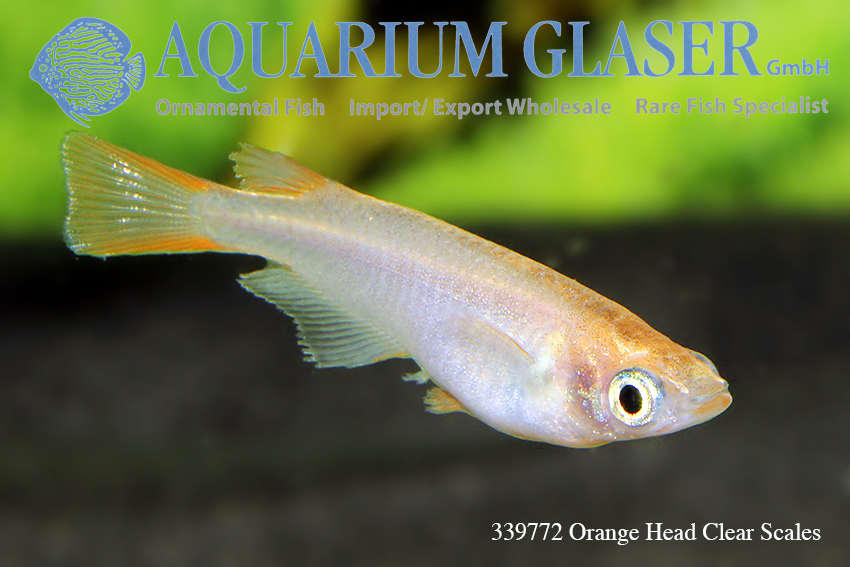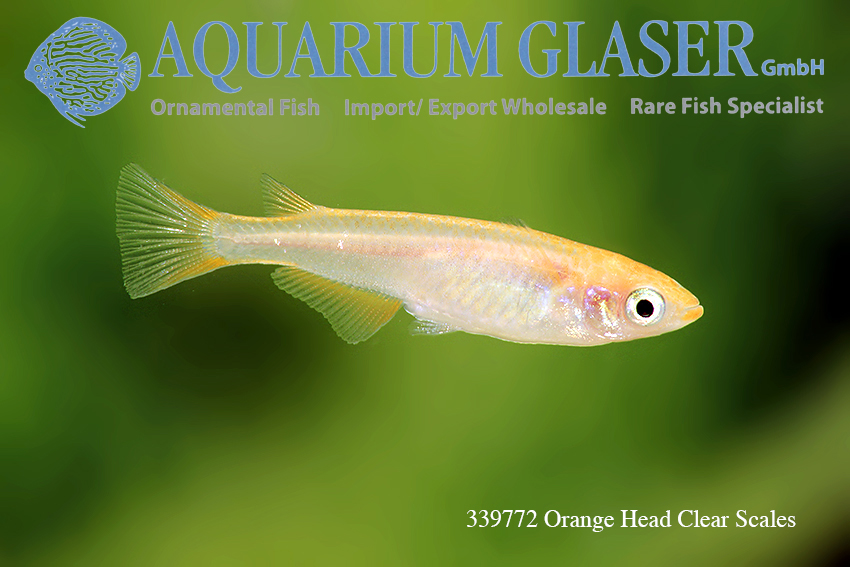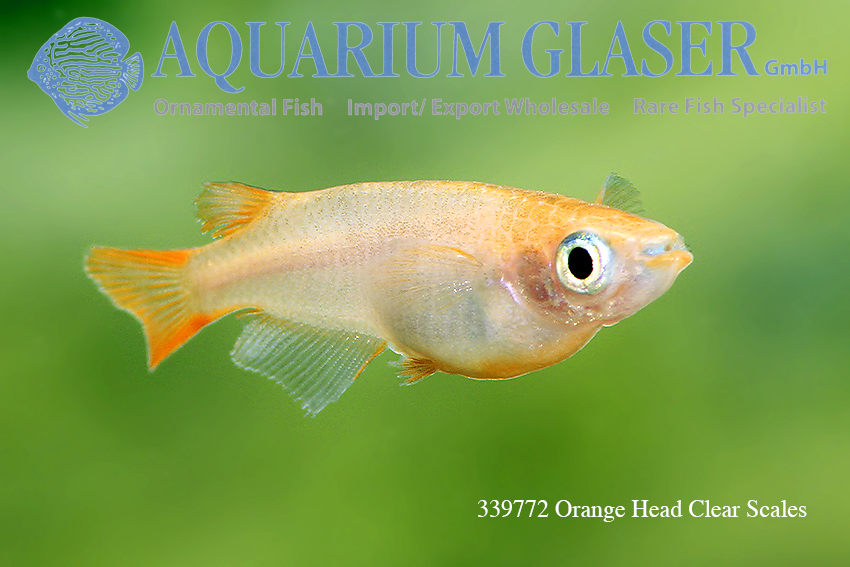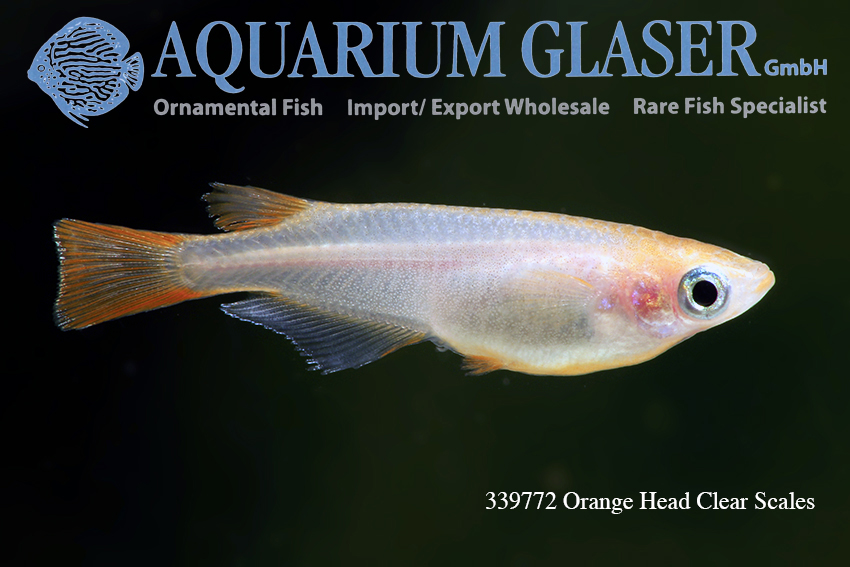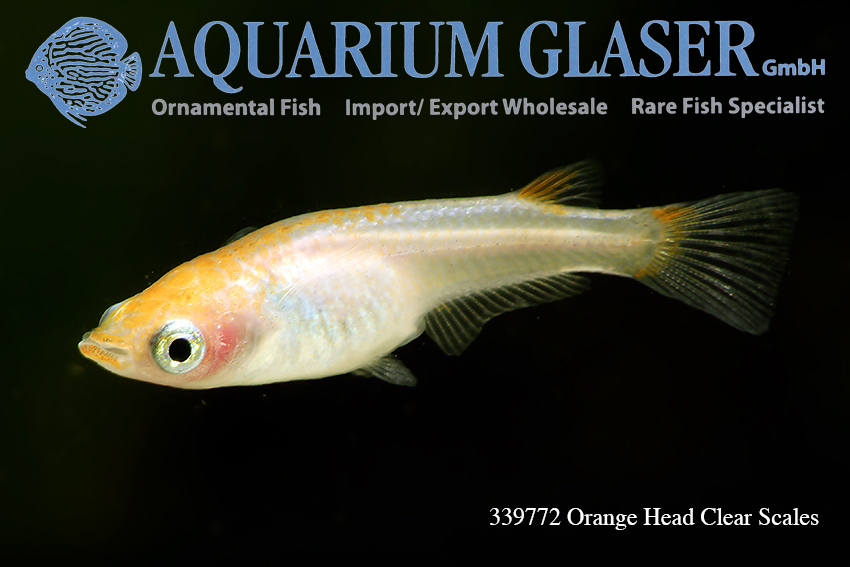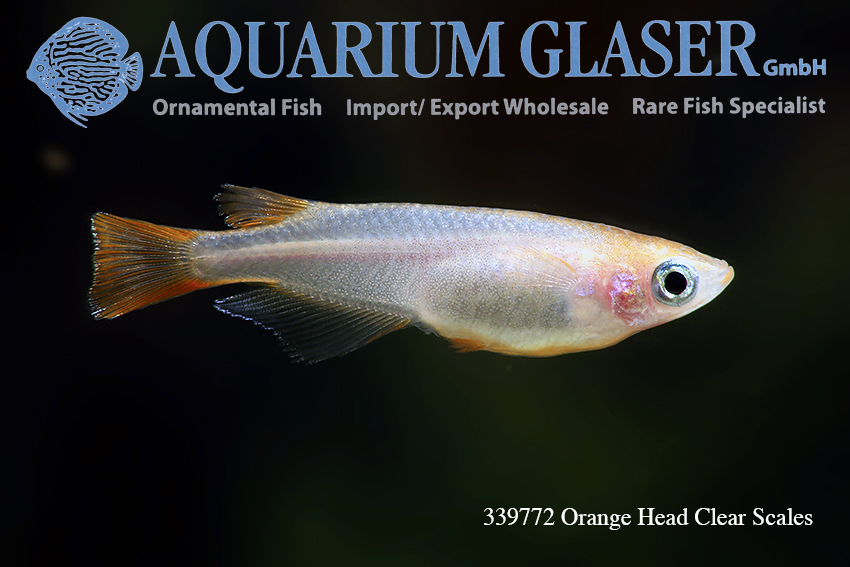The care and breeding of the Japanese Rice Fish or Medaka has a very long tradition in Japan. Already around 1900 gold-colored Medakas were mentioned in the aquaristic literature. The breeding of these small fish is currently experiencing a renaissance in Japan. Friedrich Bitter drew attention to this and also imported many of these forms which had not previously existed in Europe. From him we have received 10 variants of these animals, which we present to you:
Panda White
Genetic pure strain often used for crossings. Since some of his genes are recessively inherited, the other parent usually prevails in crosses. Is bred especially for top view.
Blue & Black Lame
Moderately variable strain, with which also animals with orange-yellow body-color appear from time to time in the offspring. The name Lame refers to the silver scales, which are mainly on the flanks and less on the back. Is bred equally for the view from the side and from above.
Miyuki Super Long Line
Genetic pure strain. The basic body colour is slightly bluish, which is why the animals are called Miyuki. A silver-blue band runs along the back from the head to the tail, which helped the variant to the designation Super Long Line. Is bred often also for the top view.
Panda Grey
Moderately variable strain in which individual adult fish develop a fine blue dorsal line. The term panda refers to the eyes that appear dark from above. The basic colour of the fish is grey. Is bred mainly for the top view.
Red & Black Lame
Slightly variable strain. In the offspring animals with yellow-orange, white and blue basic colour can appear. The term Lame refers to the metallic reflective scales of the body, which almost appear gold-coloured towards the back, especially in intensively orange-coloured animals. These are bred for side and top view.
Red & White
Very variable strain. Breeding goal are actually fish with red-orange head and orange areas on fins and light body. In the offspring, however, also strongly orange-colored and white-pink-colored specimens appear in all gradations. For aquarium (side view) and mini pond (top view).
Tricolor (Akane-Nishiki)
A variable strain that always brings surprises. One-, two- and three-coloured (Tricolor) animals appear. For the breeding goal Tricolor it is best to combine three-coloured with two-coloured specimens, because the colours appear stronger and clearer in the offspring. Red, white (or transparent) and black remind strongly of Koi in the Tricolor, which is why they are mostly bred for the top view.
Yokihi Orange
A strain that looks rather yellow-orange in an aquarium. If the animals are kept in the open under direct sunlight, they become strong orange-red after few weeks. This form is multiplied equally for aquarium and outdoor.
Akari Aurora
All strains with the designation Akari are very variable in respect of the color distribution. This is exactly what attracts breeders to use them for cross-breeding. The additional designation Aurora refers to darker scales, which increase strongly towards the back. Also interesting about this trunk are the irregularly distributed silver scales on the body sides. This strain is bred for aquarium and outdoor keeping.
Yellow Head, Clear Scales
A very rare strain in Germany with moderate variability. The head should be as yellow (orange) as possible, the body is at least partially transparent. The fins are sometimes orange, from the back sometimes irregular, dark spots reach up to the flanks. Fish for top and side view.
Text: Friedrich Bitter, photos: Friedrich Bitter & Frank Schäfer





